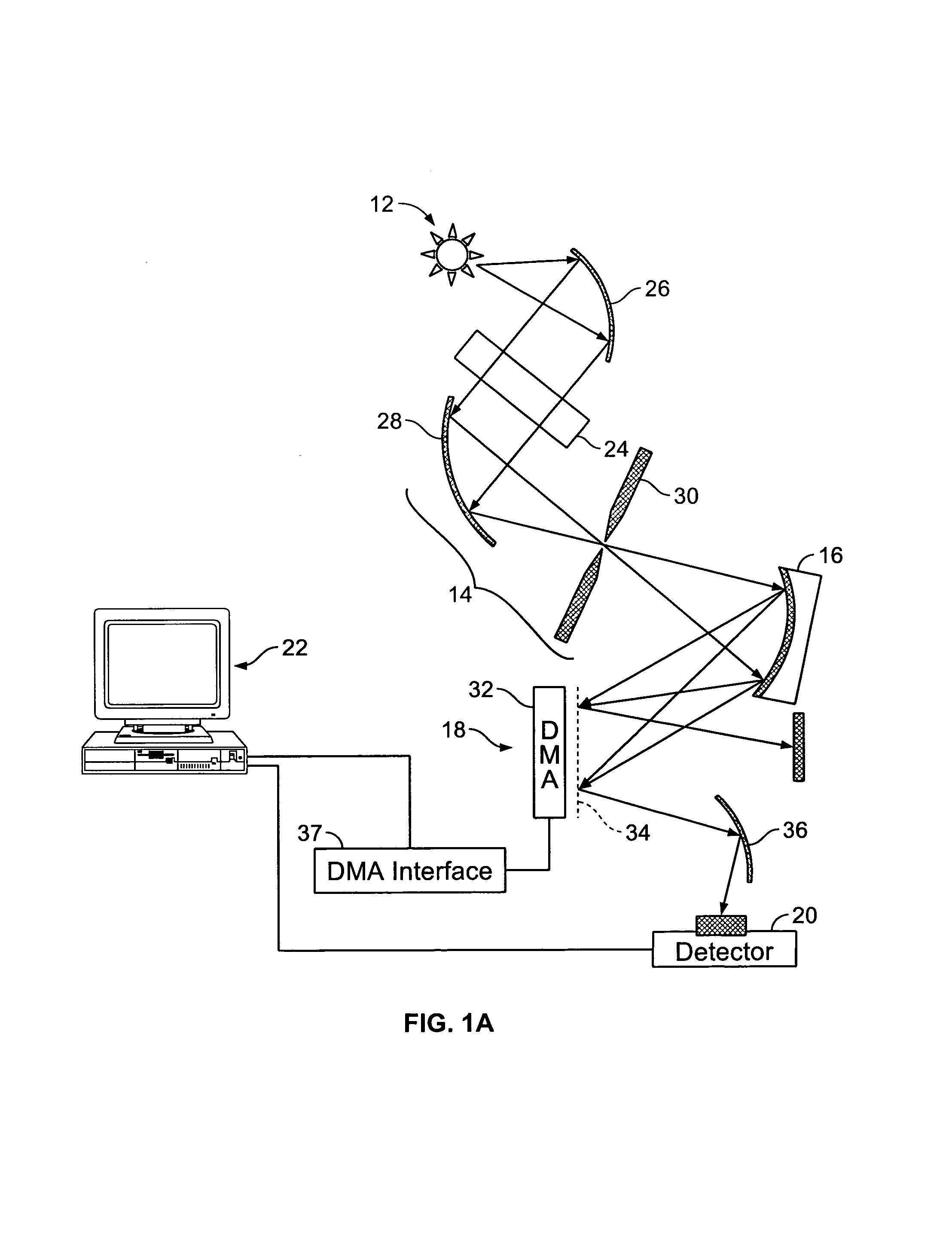System and method for hyper-spectral analysis
a hyper-spectral analysis and system technology, applied in the field of methods for hyper-spectral data processing, can solve the problems of limiting the utility of imagers, prior art imagers using a single element detector can exhibit more and a plurality of detectors at the image plane can exhibit serious signal-to-noise ratio problems
- Summary
- Abstract
- Description
- Claims
- Application Information
AI Technical Summary
Benefits of technology
Problems solved by technology
Method used
Image
Examples
Embodiment Construction
[0063]Turning now to the drawing figures and particularly FIG. 1A and 1B, a spectrometer assembly 10 constructed in accordance with one embodiment of the invention is illustrated. With reference to FIG. 1A the device broadly includes a source 12 of electromagnetic radiation, a mirror and slit assembly 14, a wavelength dispersing device 16, a spatial light modulator 18, a detector 20, and an analyzing device 22.
[0064]In particular, the electromagnetic radiation source 12 is operable to project rays of radiation onto or through a sample 24 that is to be analyzed, such as a sample of body tissue or blood. The radiation source can be any device that generates electromagnetic radiation in a known wavelength spectrum such as a globar, hot wire, or light bulb that produces radiation in the infrared spectrum. To increase the amount of rays that are directed to the sample, a parabolic reflector 26 can be interposed between the source 12 and the sample 24. In a specific embodiment, the source...
PUM
 Login to View More
Login to View More Abstract
Description
Claims
Application Information
 Login to View More
Login to View More - R&D
- Intellectual Property
- Life Sciences
- Materials
- Tech Scout
- Unparalleled Data Quality
- Higher Quality Content
- 60% Fewer Hallucinations
Browse by: Latest US Patents, China's latest patents, Technical Efficacy Thesaurus, Application Domain, Technology Topic, Popular Technical Reports.
© 2025 PatSnap. All rights reserved.Legal|Privacy policy|Modern Slavery Act Transparency Statement|Sitemap|About US| Contact US: help@patsnap.com



